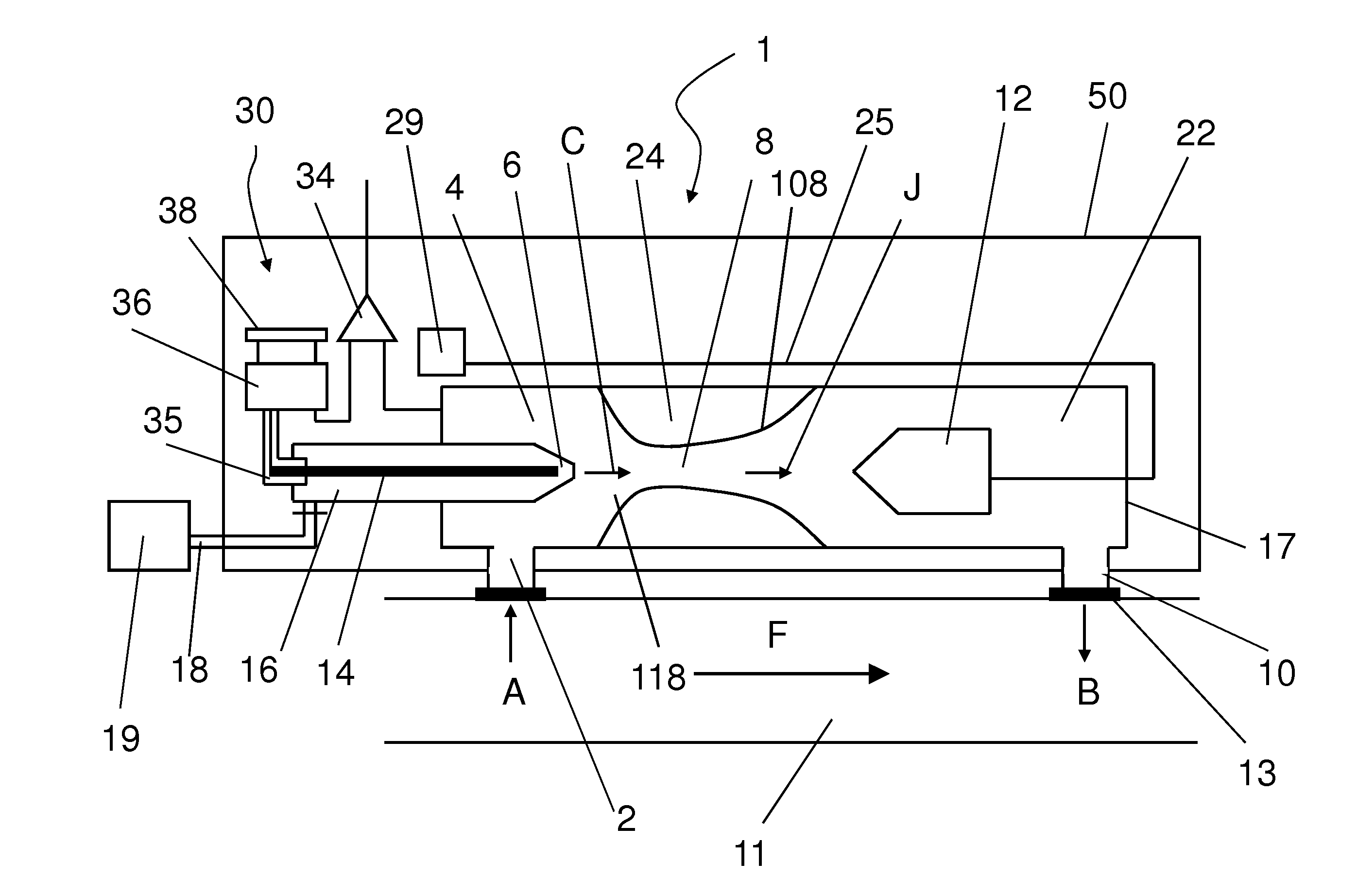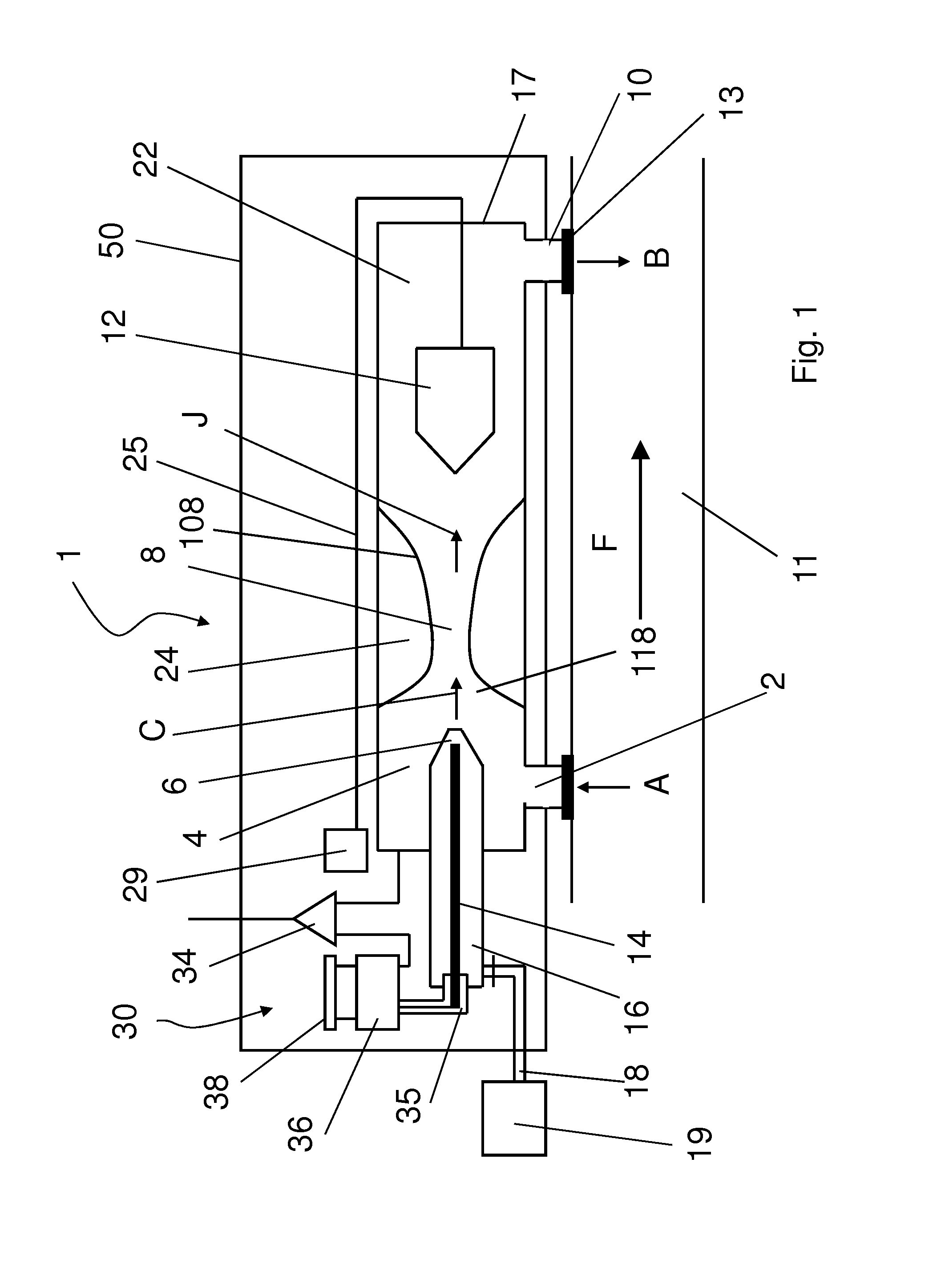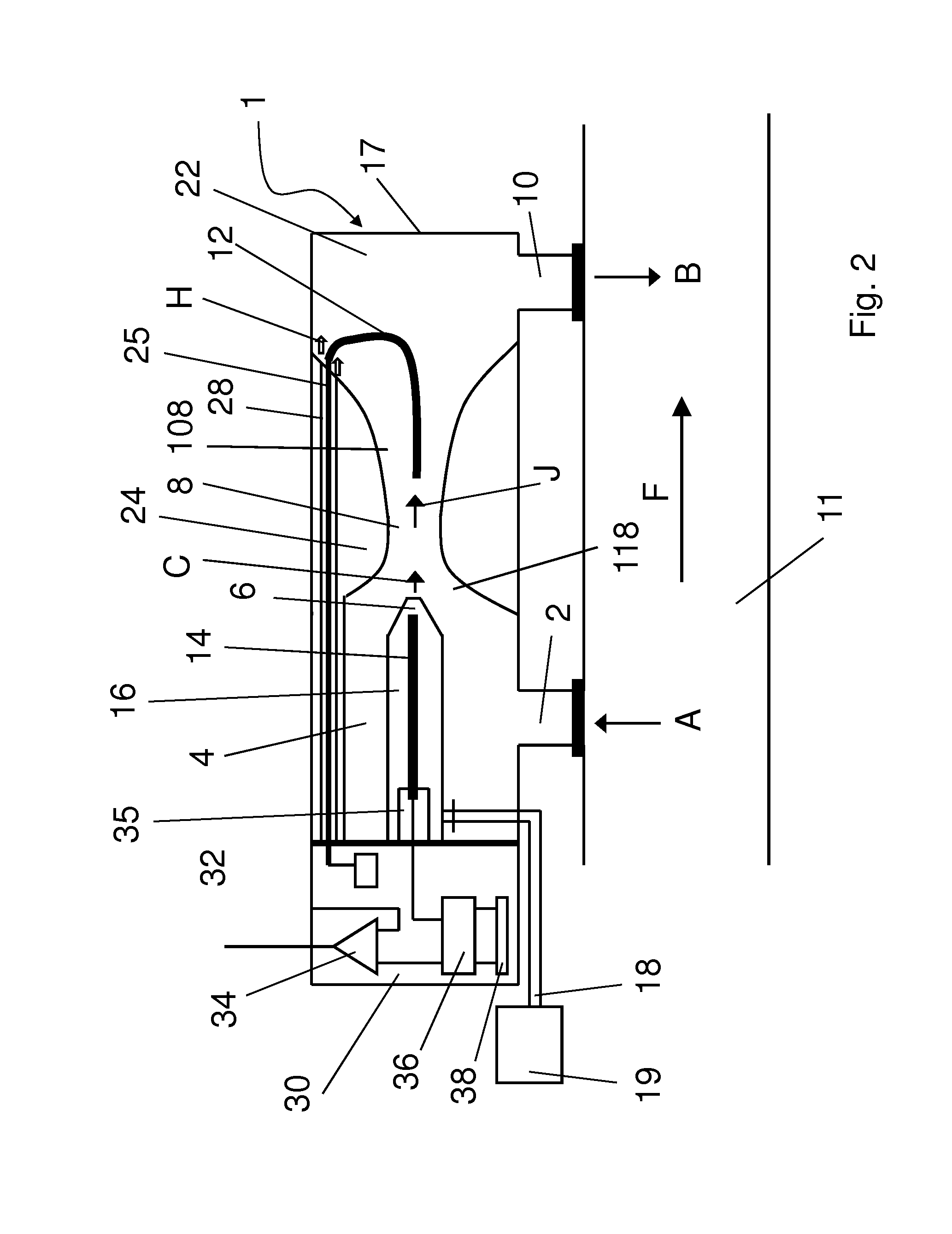Apparatus for Monitoring Particles in an Aerosol
a technology for aerosols and apparatuses, applied in the direction of instruments, suspensions and porous material analysis, withdrawing sample devices, etc., can solve the problems of instruments suffering from particle loss, and achieve the effects of reducing the external dimensions or diameter of the apparatus, enhancing the reliability of operation, and simple mechanical structur
- Summary
- Abstract
- Description
- Claims
- Application Information
AI Technical Summary
Benefits of technology
Problems solved by technology
Method used
Image
Examples
Embodiment Construction
[0017]The FIG. 1 shows one embodiment of a prior art apparatus for monitoring particles. The apparatus comprises an outer body 50 inside which is provided a measurement housing 17 and at least part of the electrical components and conductors 30 of the apparatus. As seen in FIG. 1 the electrical components and connectors 30 are arranged substantially outside of the measurement housing 17, thus between the outer body 50 and the measurement housing 17.
[0018]The measurement housing 17 provides space in which the particles monitoring of the aerosol is conducted. A sample aerosol flow A is guided from a channel, duct or a space comprising aerosol inside the measurement housing 17 for monitoring or measuring particles in the aerosol. The apparatus 1 is connected to an aerosol duct 11 in side which is an aerosol flow F. Thus the apparatus 1 is arranged to monitor fine particles or particles in the aerosol flow F. The aerosol duct may be exhaust duct of a combustion engine or the like. Alter...
PUM
| Property | Measurement | Unit |
|---|---|---|
| electric field | aaaaa | aaaaa |
| magnetic field | aaaaa | aaaaa |
| collection voltage | aaaaa | aaaaa |
Abstract
Description
Claims
Application Information
 Login to View More
Login to View More - R&D
- Intellectual Property
- Life Sciences
- Materials
- Tech Scout
- Unparalleled Data Quality
- Higher Quality Content
- 60% Fewer Hallucinations
Browse by: Latest US Patents, China's latest patents, Technical Efficacy Thesaurus, Application Domain, Technology Topic, Popular Technical Reports.
© 2025 PatSnap. All rights reserved.Legal|Privacy policy|Modern Slavery Act Transparency Statement|Sitemap|About US| Contact US: help@patsnap.com



